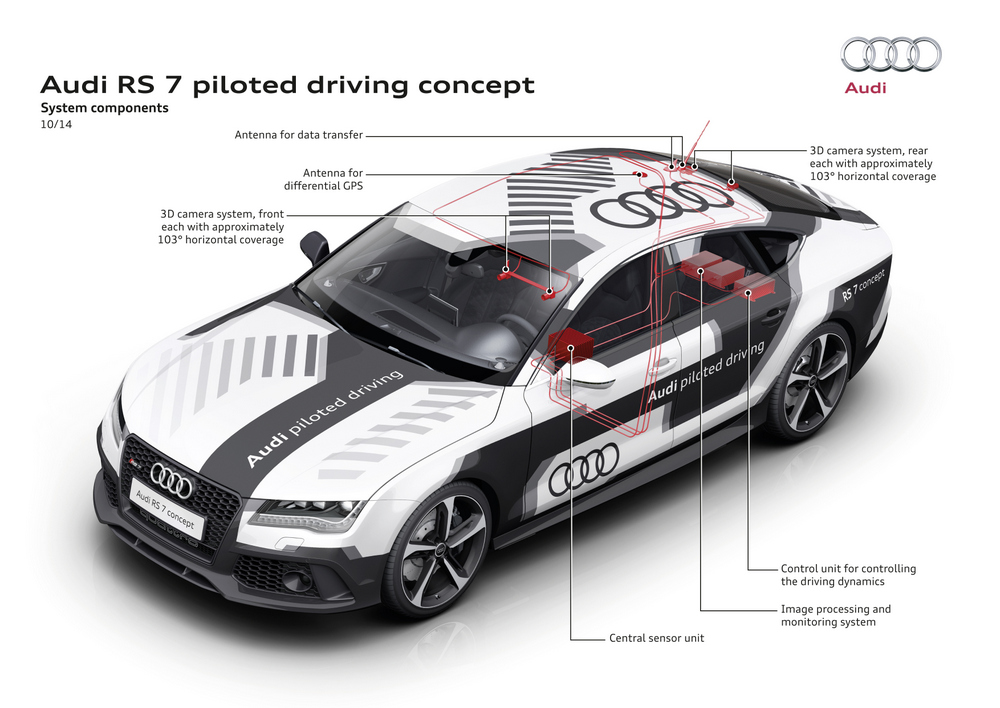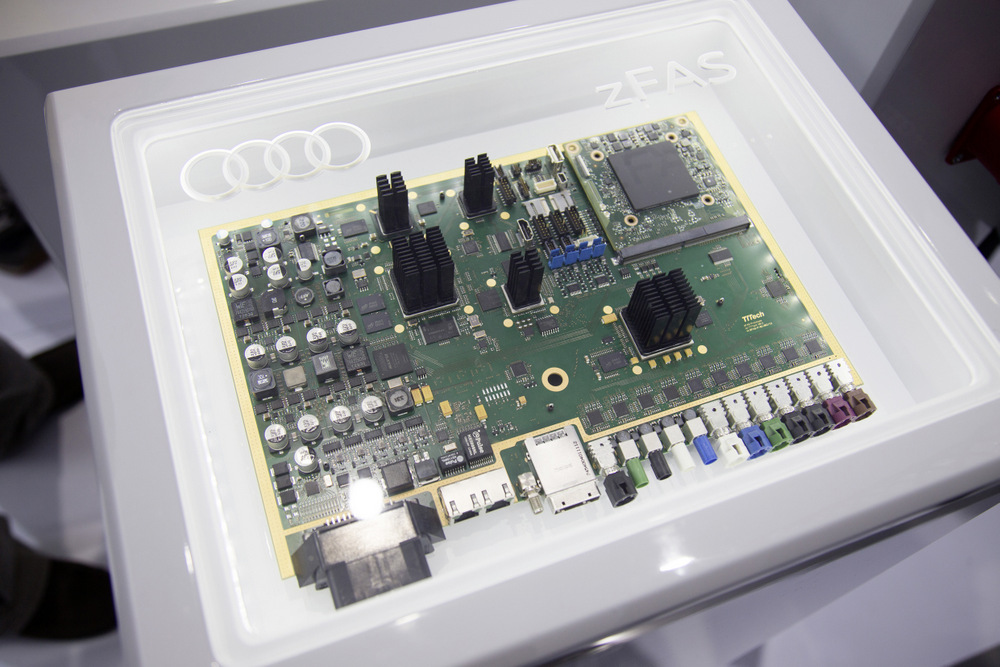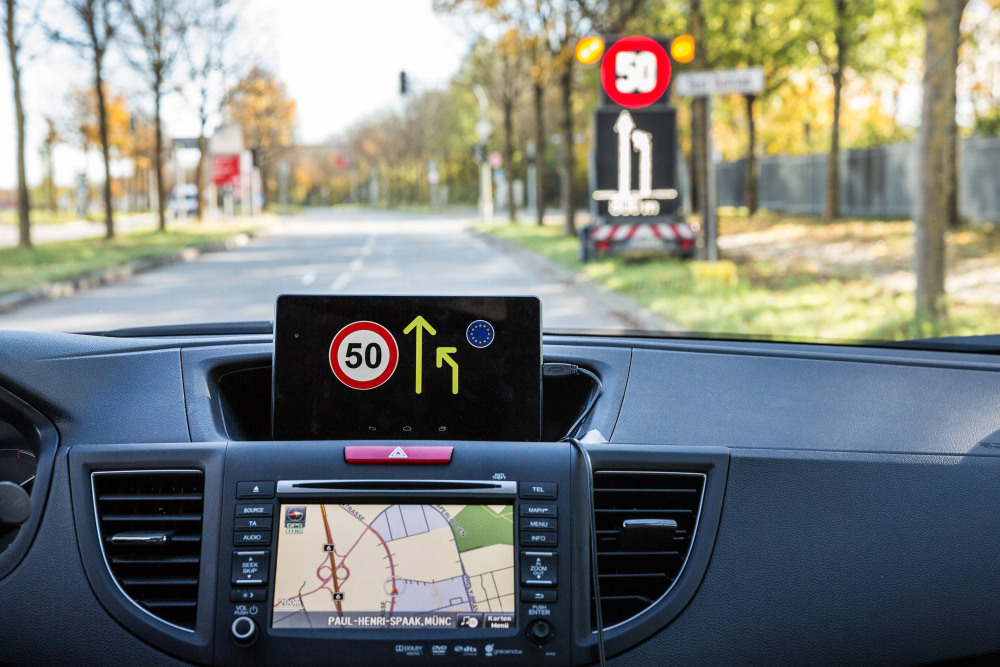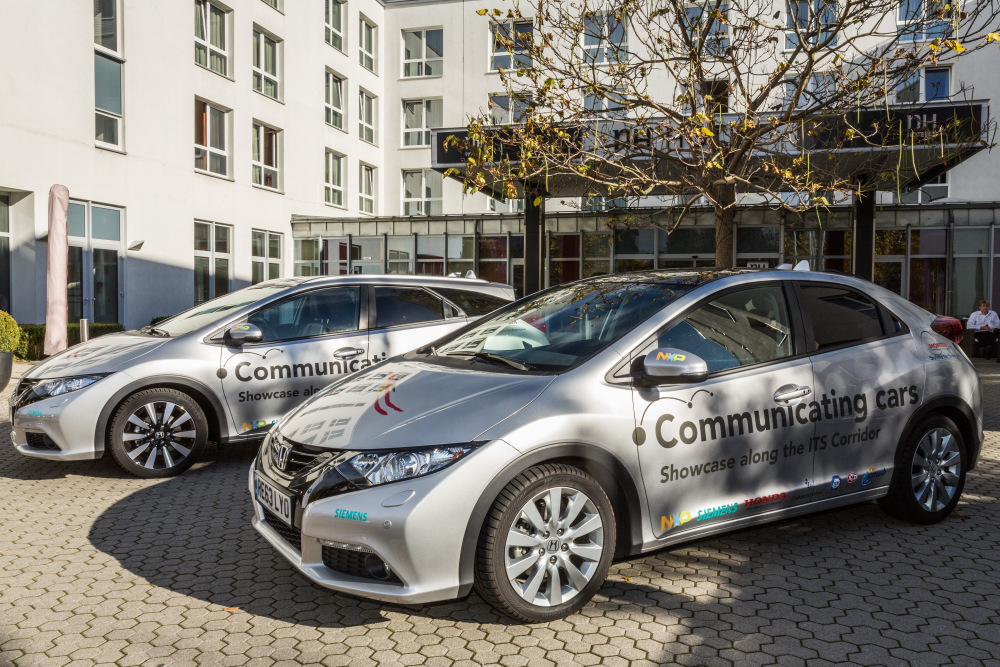How sensors & control systems enable self-driving cars
With autonomous cars promised by the end of this decade, the advanced sensing and control systems needed to make that a reality are starting to come together, giving us a better idea of what to expect, as Sally Ward-Foxton discovers.
The automotive industry has been working on the idea of autonomous vehicles for many years. While today’s cars feature increasing amounts of driver assistance, tomorrow’s vehicles and associated traffic infrastructure will improve road safety, reduce or eliminate traffic jams and minimise CO2 emissions. Here is a closer look at two new concept cars which are demonstrating how driver assistance and automation systems might look in the future.
Audi’s piloted concept car (Figure 1), based on an RS7, is a technology platform developed by Audi to explore piloted driving. Audi recently tested the car to the limits of its performance around the Grand Prix racetrack at Hockenheim as part of the season finale of the German Touring Car Masters (DTM). It’s also been tested around the Ascari Race Resort track, a much more challenging circuit with ascents and descents, tight chicanes and banked bends.

Figure 1 - The electronics systems inside the Audi concept car
The car uses GPS for orientation around the racetrack, which it gets via WLAN and also via high-frequency radio for redundancy purposes. Audi says its differential GPS system is accurate to within a centimetre. For the demo, the car also had images of buildings around the racetrack pre-loaded, which it compared to the data from a 3D camera to work out where it was.
The car drove a clean ideal line around the racetrack, with full throttle on the straights, precise deceleration at the ideal point on each corner, precise turn-in and then equally precise acceleration out of the corners. Maximum speed during the tests at Hockenheim was 149.1mph (240km/h), but the car’s top speed is 189.5mph (305km/h).
Although this particular car is just for development purposes, Audi says the technology will be in production cars before the end of the decade, enabling piloted driving in situations such as traffic jams. With the system activated, the car will take over steering, acceleration and braking when it detects traffic jam conditions. The car will also park itself into tight spaces, perhaps against a wall where the driver wouldn’t normally be able to get out of the car. In this situation, the driver gets out of the car before parking and remotely controls it using a remote key fob or smartphone. The parking pilot only works when the key is in the vicinity of the car, though – so no leaving it to park up while you get started on the shopping.
Sensor systems on board include a radar system, which covers a 35° field up to 250m from the front of the car to detect objects and other vehicles. It also uses a video camera to look for traffic signals, pedestrians and vehicles. Up to twelve ultrasonic sensors also monitor the area immediately surrounding the car. The newest addition to the car’s sensor systems is a laser scanner, which emits almost 100,000 infrared pulses every second from a laser diode. The scanner covers a 145° field of vision at a range of up to 80m; the wide aperture angle helps detect cars entering the same lane as early as possible.

Figure 2 - Audi’s zFAS central control system for its piloted car
The data from all the sensor systems is fed into control unit called zFAS (Figure 2) which uses high-end multi-core processors to calculate a precise model of the car’s surroundings which is used by all the other systems. Audi says its central control unit is novel in the industry, since others are using separate control units for the different systems. The zFAS board is currently about the size of a tablet PC, though this will shrink in the future.
V2X communications

Figure 3 - The inside of NXP’s concept car. A tablet on the dashboard gives the driver notifications as it receives them from surrounding infrastructure
At electronica 2014 in Munich, NXP showed off its own concept car that demonstrates vehicle-to-vehicle and infrastructure-to-vehicle (V2X) communication driver assistance systems (Figures 3 & 4). The car, supplied by Honda, was fitted with NXP’s secure communication technology, while Siemens supplied intelligent road infrastructure for the demo. Cohda Wireless supplied the application software.
V2X communication uses IEEE 802.11p, a standard related to WiFi which has been specified especially for the automotive industry. Its range is such that drivers can be warned about hazards that are a long way ahead or even out of their line of sight, such as around a corner. The 5.9GHz radio electronics and antenna is in a roof mounted module which will be integrated in production models.
When the concept car receives an alert from a piece of infrastructure up ahead, a warning notification is displayed on a tablet installed on the dashboard. Future versions may project the warning onto the windshield or give the driver some other type of feedback, such as vibration through the steering wheel. Future versions may also be able to reduce the number of notifications to avoid unnecessary distractions. The system may only warn the driver if it is relevant - for example, if the driver had already slowed down, the car could assume that the driver had already seen the hazard.

Figure 4 - The NXP/Honda test vehicles at electronica 2014, before leaving for Vienna
Security is also of paramount importance. It’s easy to imagine how the system could be abused; if it were possible for an ordinary car to pose as, say, an emergency vehicle, the unscrupulous user would be able to drive around with everyone else pulling over in order to let them past as quickly as possible. Of course, this will not be possible. Every signal received will have a dynamic digital signature which the car will authenticate to determine whether it’s trustworthy. The signature’s dynamic nature helps protect drivers’ privacy since it eliminates the possibility of being tracked.
Following the show, a convoy of five Hondas with the systems fitted were test-driven along the route of the recently agreed Intelligent Transport System (ITS) test corridor, which stretches from Vienna to Rotterdam via Frankfurt. The ITS corridor is a co-operation between various ministries, motorway operators and the automotive industry on an unprecedented scale. Roads across Austria, Germany and the Netherlands will be fitted with smart traffic lights, smart road works warnings and sensors which detect conditions like traffic jams. The aim is to improve road safety and traffic flow while ensuring Europe-wide compatibility between ITS systems.
NXP and Cohda’s V2X communication technology will be introduced into some new production models of Cadillac in 2017.










